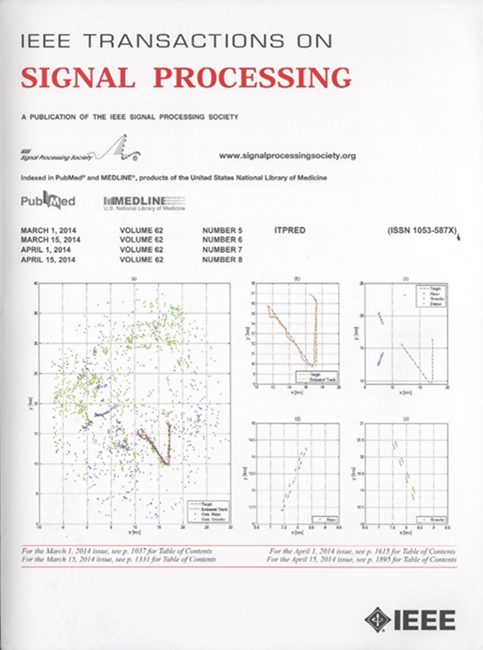An Investigation of Using Rigid Body Receivers for Locating a Non-Cooperative Object by Pseudo-Ranges in the Absence of Synchronization
IF 4.6
2区 工程技术
Q1 ENGINEERING, ELECTRICAL & ELECTRONIC
引用次数: 0
Abstract
A traditional receiver has only one sensor to observe the signal from an object for localization. This research investigates the extension of a receiver to a rigid body (RB) that has several sensors attached to its different spots for non-cooperative localization. In addition to the position uncertainties of RB receivers as in a typical wireless sensing network, their orientations may not be known. We show that using RB receivers relieves the stringent requirement of synchronization among them for locating a non-cooperative object by time observations, even without knowledge about the orientations of the RBs. The minimum number of illuminators, RB receivers and sensors, as well as the geometry requirement to achieve localization are established, for the cases of without and with the availability of inaccurate orientations. The optimum placements of the sensors within an RB receiver and the RBs in the localization space are derived to achieve the A-optimality for the object location estimation under Gaussian noise. Simulation results confirm well the developed theories.求助全文
约1分钟内获得全文
求助全文
来源期刊

IEEE Transactions on Signal Processing
工程技术-工程:电子与电气
CiteScore
11.20
自引率
9.30%
发文量
310
审稿时长
3.0 months
期刊介绍:
The IEEE Transactions on Signal Processing covers novel theory, algorithms, performance analyses and applications of techniques for the processing, understanding, learning, retrieval, mining, and extraction of information from signals. The term “signal” includes, among others, audio, video, speech, image, communication, geophysical, sonar, radar, medical and musical signals. Examples of topics of interest include, but are not limited to, information processing and the theory and application of filtering, coding, transmitting, estimating, detecting, analyzing, recognizing, synthesizing, recording, and reproducing signals.
 求助内容:
求助内容: 应助结果提醒方式:
应助结果提醒方式:


